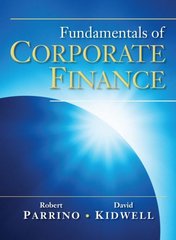
13. (35 points total) Acme Pharmaceuticals sells a patent-protected drug Acmestin in the U.S. and in the E.U. markets. The U.S. demand curve is Pus = 60 0.5Qus, and the the E.U. demand curve is Pgu = 60 - QEu. All prices are in U.S. dollars. Quantity is measuring in vials. Acme's marginal cost of producing Acmestin is MC = 10 in both countries. (a) (10 points) At first, the U.S. and E.U. governments prevent resale of Acmestin. This means Acme can price discriminate. What are Acme's optimal prices Pus and Peu for Acmestin in the U.S. and E.U. markets respectively? How many vials of Acmestin does Acme sell in the U.S. market, qus, and in the E.U. market, 9EU? (b) (10 points) Suppose now that the U.S. and E.U. governments allow resale of Acmestin. This means Acme can no longer price discriminate, although Acme is still a monopoly. What is the optimal monopoly p price that maximizes Acme's profits, and how many vials q does it sell in the U.S. and E.U. markets? (c) (15 points) Use one graph for the E.U. market and another for the U.S. market to show the welfare implications of the policy change in (b) in each market - that is, the implications on consumer and producer surplus, and the deadweight losses. Overall, is this a social welfare improvement or reduction? Provide intuition for the overall welfare impact. (HINT: recall that social welfare = consumer surplus + producer surplus) 13. (35 points total) Acme Pharmaceuticals sells a patent-protected drug Acmestin in the U.S. and in the E.U. markets. The U.S. demand curve is Pus = 60 0.5Qus, and the the E.U. demand curve is Pgu = 60 - QEu. All prices are in U.S. dollars. Quantity is measuring in vials. Acme's marginal cost of producing Acmestin is MC = 10 in both countries. (a) (10 points) At first, the U.S. and E.U. governments prevent resale of Acmestin. This means Acme can price discriminate. What are Acme's optimal prices Pus and Peu for Acmestin in the U.S. and E.U. markets respectively? How many vials of Acmestin does Acme sell in the U.S. market, qus, and in the E.U. market, 9EU? (b) (10 points) Suppose now that the U.S. and E.U. governments allow resale of Acmestin. This means Acme can no longer price discriminate, although Acme is still a monopoly. What is the optimal monopoly p price that maximizes Acme's profits, and how many vials q does it sell in the U.S. and E.U. markets? (c) (15 points) Use one graph for the E.U. market and another for the U.S. market to show the welfare implications of the policy change in (b) in each market - that is, the implications on consumer and producer surplus, and the deadweight losses. Overall, is this a social welfare improvement or reduction? Provide intuition for the overall welfare impact. (HINT: recall that social welfare = consumer surplus + producer surplus)







